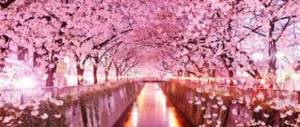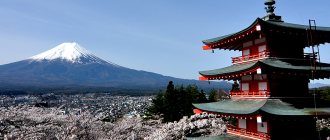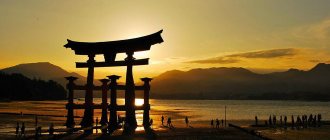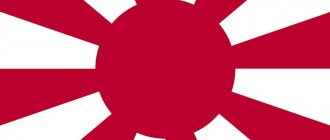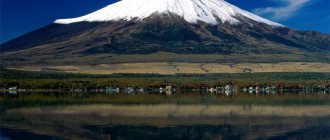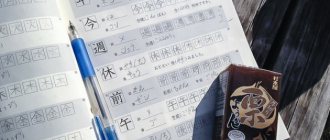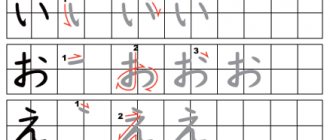The Hanami holiday is a national Japanese tradition. People take to the streets to enjoy the sight of the ume (Japanese plum) blossoming. Petals bloom in almost all cities of the Land of the Rising Sun. Special maps are created for tourists, which indicate when and in certain cities this solemn event will begin.
The very first hanami was recorded in Shizuoka Prefecture. After 30-40 years, the tradition of widespread observation of enchanting flowers began to take root. The Japanese planted dozens of alleys with sakura trees, strewn with petals ranging from white to dark pink.
The tradition has been adopted by many countries around the world, where this plant variety acclimatizes well. For example, park paths with amazing cherry blossoms can be found in South Korea, Russia, Amsterdam and Chicago.
How sakura blooms
Hanami is often celebrated in Ueno Park in Tokyo. There is a large field with picturesque trees of different heights.
The celebration does not last long. Majestic cherry blossoms delight local residents and tourists with their blooming for only 7-10 days. After this, the light scarlet petals fall off.
If the weather suddenly deteriorates, then light petals may fly off the tree already on the 5th day after flowering. Thus, a strong wind or hurricane can ruin the celebration.
Trees begin to bloom when the air warms up to a temperature of plus 18 °C. The first cherry blossoms are blooming in the southern part of the country. Then the festival gradually moves to the northern regions. In total, the ceremony lasts about 3 months, passing through each Japanese prefecture (February-May).
On central television, the media notifies the local population about the beginning of the flowering season. The Japanese can learn about the place where the first tree bloomed. Reporters report on the trend by tracking the number of trees with pink petals.
There is also a large planting in Shinjuku-gyoen National Park. About 1,500 trees of 75 varieties grow there. In second place in terms of the number of cherry blossoms is Tokyo City Park with an area of 626 thousand square meters. m. with 1100 trees.
A popular viewing spot is Sumida, where there are about 400 trees. In this place, guests enjoy unique lighting. Trees become especially attractive after dusk. The plums are illuminated with multi-colored light bulbs, creating an indescribable magical atmosphere. It is simply impossible to tear yourself away from such a wonderful spectacle.
Koishikawa Korakuen Garden
Koishikawa Korakuen Garden is one of the most popular gardens in Tokyo. Dozens of Japanese cherry trees are planted here, including its weeping varieties. By the way, they are somewhat delayed in their flowering compared to other specimens.
Cherry blossom period in Tokyo, Koishikawa Korakuen Garden
Koishikawa Korakuen Garden opening hours and prices:
open from 9:00 to 17:00, admission 300 yen. During the cherry blossom period, the garden will be open from 9:00 to 18:00 (last entry at 17:30).
How to get there:
Koishikawa Korakuen is located in the Tokyo Dome area, a ten-minute walk from either of the two nearby JR stations (Iidabashi and Suidobashi), on the railway. d. line Chuo-Sobu (Chuo-sobu) or railway. Korakuen station on the Tokyo subway.
Book a hanami tour in Tokyo
Chidori zi Gefuchi
Chidori zi Gefuchi is a picturesque natural place in Tokyo. This is the name given to a man-made reservoir with a protective earthen moat located around the Chiyoda Imperial Palace, in its northwestern part. The water canal is surrounded by ancient cherry trees; during the Japanese cherry blossom season, numerous tourists and residents of Tokyo come here every year to admire the luxurious and delicate spring blossoms.
Cherry blossoms in Tokyo, landscapes of Chidori zi Gefuchi
You can rent a boat for boating on the pond. In the evening, the sakura alleys are specially illuminated. In the nearby area near the Yasukuni Shrine (Yushukan, English: Yasukuni Shrine), you can buy something to eat if you suddenly get hungry.
Chidori zi Gefuchi opening hours and prices:
admission is free, lighting is usually on until 22:00.
How to get there:
The park is located near Kudanshita Station, Tokyo Subway.
history of the holiday
The Japanese holiday originated at the imperial court. The tradition of enjoying cherry blossoms has spread since the Heian era. The court servants spent a lot of time contemplating the charming plum and cherry trees.
Sakura inspired poets and writers to create new works, and delightful songs were written about her. The first tree that the Japanese praised was the mountain plum. It blooms a little earlier than sakura. Its sprouts were brought to Japan from China. For a long time, the tree symbolized the Chinese state and its cultural heritage.
Gradually, plum and sakura trees began to receive equal respect. This is believed to have reinforced the trend towards national identity. In 894, Japan abolished the law under which envoys were sent to the imperial Chinese court. The country gained independence.
Askayama Park
Asukayama Park is considered the oldest and most famous owner of cherry blossoms in Tokyo. Every evening the electric lights are turned on here, admission is free.
Askayama Park, photo
Opening hours and prices:
Asukayama Park is open 24 hours a day and admission is free.
How to get there:
The park is located just a few minutes walk from the train station. Oji Station, accessible on the Keihin-Tohoku, Namboku and Toden-Arakawa lines. It is located in the special area of Kita, Tokyo.
How khanami is celebrated in Russia
In our country there are also places where you can enjoy the alleys with sakura. To create a truly Japanese mood and immerse yourself in the atmosphere, you can try Asian cuisine. In the Sushi Wok chain of stores you will find the most delicious rolls.
In our country, sakura is planted in Yuzhno-Sakhalinsk. A large area with trees is located on the territory of the regional museum of local lore. Trees of the Sakhalin and Kuril varieties are planted in this place. The seedlings were brought from Japan in 2006. The first alley was arranged in the city park named after. Yu. A. Gagarin.
The Japanese Garden of the Main Botanical Garden named after N.V. Tsitsin has been opened in Moscow. There are about 250 trees there. Therefore, even residents of the capital can admire the cherry blossoms.
Rules of good manners
Photo: Shutterstock.com
Each Japanese park has its own rules of behavior - be sure to follow them. The Japanese are very respectful of their land and expect the same from tourists. Here are some rules:
- You cannot pick sakura, climb trees and shake them to shed the crown.
- In most parks it is prohibited to make fires, including barbecuing or barbecuing.
- The same goes for alcohol: in some places drinking alcoholic beverages is not encouraged. Although here, as in any country and place, everything rather depends on the drinking culture. A glass of wine is one thing, several bottles are another.
Even though spring has arrived, temperatures can still be quite low. Better dress warmly, don’t let the bright sun and blooming greenery fool you.
Check the weather forecast: a picnic in a downpour is unpleasant in itself, but the rain can also knock down the cherry blossoms, which will stick to your clothes.
It is better to look at sakura from afar, without sitting directly under the trees, otherwise the petals will get into your food and drinks.
Not all parks have trash disposal areas. Be prepared to take the packages with you.
Meguro River
The cherry blossoms along the small Meguro River, near the Naka-Meguro area, are an impressive natural spectacle. In the third ten days of March and the first ten days of April, the alleys are specially illuminated for night walks and admiring the cherry blossoms.
Hanami Festival in Tokyo, Meguro River
Opening hours and prices:
Cherry blossoms over the Meguro River are a public attraction, this place is open 24 hours a day, visiting is absolutely free.
How to get there:
First you need to get to JR Meguro Station, and then walk along the river bed to Nakameguro Station.
The beginning of cherry blossoms in Tokyo
Book a hotel in Tokyo
Description of the tree
Sakura is the name given to trees of the rose family, subfamily of plums (species: small-serrate cherry), most of which perform a purely decorative function: they bloom, but do not bear fruit (unlike other trees of its species, Japanese sakura is grown not for its berries, but for its flowers). There are 16 types of sakura and more than 400 varieties.
Despite the fact that sakura trees can be found mainly in the south of the northern hemisphere: in China, Korea, and the Himalayas, the largest number of trees of this type grows in Japan: nine out of sixteen species and a considerable number of varieties. There are especially a lot of someyoshino (white sakura with huge flowers) and shidarezakura (weeping willow) here - this color of sakura has a pink tint.
Sakura grows very well next to other plants of its species, which, depending on how they were planted, produce a different impression. For example, tree branches planted in parallel rows can intertwine with each other at the top, forming a blooming arch above your head - this looks especially chic if at this time the flowers have already begun to gradually fall and a person is walking on the carpet that the sakura petals created.
The oldest trees in the world455464.119
The height of the plant depends on its age, but is usually about 8 meters (but there are also taller trees, for example, one of the oldest sakura in the world, whose age is 1800 years, has about 24 meters in height).
The bark is smooth, cut across the entire surface of the tree with small horizontal cracks of a gray, green or red hue, and the wood of the tree is very flexible due to the high amount of resin in it.
The leaves are oval or spear-shaped with slightly serrated edges. When a sakura branch blooms, it is completely covered with flowers, mostly white or pink, with each inflorescence consisting of several double flowers, usually having 5 petals. The Japanese managed to develop species whose flowers contain about 50 petals, the diameter of which is about 50-60 mm - in appearance they even resemble roses, peonies, and chrysanthemums.
Sakura petals can be of different colors: white and pink sakura are common, but you can often see flowers in red, crimson, yellow and even green and variegated tones. Since sakura flowers bloom even before sakura leaves appear on the tree, it seems as if a huge number of delicate inflorescences are clinging to a dead and bare trunk (which is why the flowering period in Japan is also associated with rebirth).
When the sakura petals begin to fade, but have not yet fallen from the tree, and the sakura branch is overgrown with the first leaves, the plant looks extremely elegant and summery (the Japanese call it Ha-Zakura, which means “sakura with leaves”).
Few trees of this type bear fruit, and if they do produce a harvest, the sakura fruits (sakurambo) are usually very small, cherry-colored, have a large seed, tightly covered with thin pulp, and taste very sour and tart. They are sold in small boxes and are extremely expensive.
Hiroshima
Optimal period to visit hanami: from March 24 to April 1, 2021
Approximate time of flowering: March 22, 2020
After the events of World War II, Hiroshima regained its beauty, and now the city is actively developing. Today, the city is one of the most visited destinations in all of Japan.
The best places to admire sakura:
- Hiroshima Peace Park - Built to commemorate the victims of the nuclear bomb, this park is probably the most visited in the prefecture. Numerous cherry blossom trees are scattered throughout the park.
- Hiroshima Castle - Japan is known for its historical castles. This castle is surrounded by a beautiful cherry orchard, making the place a particularly attractive tourist destination during the Hanami period.


